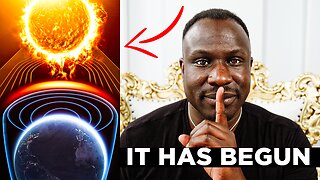Washington DC 1955 red buick Special (264 CID V8) Found On Vintage 8mm
1955 red buick Special (264 CID V8)
The centerpiece of the memorial is a colossal sculpture group depicting the six Marines who raised the second and largest of two U.S. flags that were both raised atop Mount Suribachi located at the south end of Iwo Jima, on February 23, 1945. The first flag flown over the mountain was regarded to be too small to be seen by all the American troops on the other side of it where most of the fighting would take place, so it was replaced by a larger flag.
The flag-raising also was recorded by Marine Sergeant Bill Genaust, a combat motion picture cameraman. He filmed the event in color while standing beside Rosenthal. Genaust's footage established that the second flag raising was not staged. On March 4, 1945, he was killed by the Japanese after entering a cave on Iwo Jima and his remains have never been found. The subjects of Rosenthal's photograph (identification changes were made in 1947, 2016, and 2019), from right to left, are as follows:[4]
Position 1: Corporal Harlon H. Block
Position 2: Corporal Harold P. Keller
Position 3: Private First Class Franklin R. Sousley
Position 4: Sergeant Michael Strank
Position 5: Private First Class Harold H. Schultz
Position 6: Private First Class Ira H. Hayes
The Memorial was approved by the United States Congress and commission for the memorial was awarded in 1951, after it was approved and accepted by the Marine Corps League who also selected De Weldon as the sculptor. De Weldon spent three years creating a full-sized master model in plaster, with figures 32 feet (9.8 m) tall. This was disassembled like a giant puzzle, and each piece was separately cast in bronze. Peaslee's base for the memorial is made of black diabase granite from a quarry in Lönsboda, a small town in the southernmost province of Sweden.[5] It features a number of inscriptions. The Groundbreaking ceremony was held on February 19, 1954, exactly nine years after the Marines landed on Iwo Jima. General Lemuel Shepherd, 20th Commandant of the Marine Corps, did the groundbreaking. Construction of the memorial began in September. The bronze pieces of the sculpture were assembled to Brooklyn, New York for casting in bronze. This took about 3 months to complete. After that, they were reassembled into a dozen pieces and were shipped back to Arlington, Virginia in a 3 truck convoy, to which was added a 60 feet (18 m) flagpole. The total cost of the memorial was $850,000, including the development of the site. It was paid for with donations mostly from active duty Marines and Marine Reservists. Other donors included former Marines and friends of the Marine Corps and members of the Naval Service; no public funds were used.
The memorial was dedicated on Wednesday, November 10, 1954, the 179th anniversary of the founding of the Marine Corps.[1] The Presiding officials included President Dwight D. Eisenhower, Vice President Richard Nixon, Secretary of Defense Charles E. Wilson, Deputy Secretary of Defense Robert Anderson, Assistant Secretary of the Interior Orme Lewis, and General Lemuel C. Shepherd. Besides the words and prayers said by three military chaplains, remarks during the dedication were given by Robert Anderson, Chairman of the Day, Colonel J.W. Moreau, U.S. Marine Corps (Retired), President, Marine Corps War Memorial Foundation, Orme Lewis, and General Lemuel Shepherd who presented the monument to the people of the United States. Following that, a U.S. flag was raised up the Memorial's flagpole. Felix de Weldon also spoke, and Richard Nixon gave the dedicatory address.[6] The dedication ceremony ended with the playing of taps. The Memorial was under the stewardship of the Marine Corps Memorial Foundation until the monument was dedicated.
President John F. Kennedy issued a proclamation on June 12, 1961, that a Flag of the United States should fly over the memorial 24 hours a day, which is one of the few official sites where this is required.[7] Despite being mounted on the staff of the sculpture, which depicts an event that occurred when the U.S. flag had 48 stars, the flag used is a modern one (specifically, one featuring the number and arrangement of stars prescribed as of when the flag is being flown) in keeping with both the text of the proclamation and the memorial's dedication to all Marines who died in defense of the United States regardless of when their deaths occurred.
The memorial is located on a high ridge, overlooking the national capital. The Marine Barracks, Washington, D.C. uses the memorial as the centerpiece of its weekly Sunset Parade, featuring the Drum and Bugle Corps and the Silent Drill Platoon.
three holes per side on lesser Buick models and four per side on the top-of-the line offerings, with slight tweaks from year to year. In the 1955 lineup (above) the Special (264 CID V8) featured three mouseholes in each front fender, while the Century, Super, and Roadmaster (322 CID V8) boasted four per side.
Kane Pennsylvania https://en.wikipedia.org/wiki/Kane%2C_Pennsylvania
-
 1:50:54
1:50:54
Jewels Jones Live
2 days agoUNDERSTANDING NEXTGEN MARXISM | A Political Rendezvous - Ep. 76
26.3K34 -
 LIVE
LIVE
Akademiks
22 hours agoAll Will Be Revealed! Drake vs Kendrick vs The Riddler. Who Lied, Who Snaked, Mole Finally Revealed!
6,896 watching -
 1:08:38
1:08:38
Russell Brand
2 days ago“You’re Going To Get KILLED!” Mike Benz EXPOSES CIA Secrets Like NEVER Before - Stay Free #363
347K759 -
 1:35:13
1:35:13
Roseanne Barr
2 days ago $74.67 earnedKeep My Name Out Yo M*Therf*Cking Mouth! | The Roseanne Barr Podcast #47
158K374 -
 1:19:00
1:19:00
Steven Crowder
3 days agoBradley Martyn and Vitaly's Hollywood Pedo Bust Goes Wrong! Guests: Alex Rosen | Vivek Ramaswamy
643K1.08K -
 53:40
53:40
The Osbournes
5 days ago $1.07 earnedWould You Eat a Monkey? Osbourne's Wildest Meals
53.3K13 -
 1:19:01
1:19:01
Steve-O's Wild Ride! Podcast
3 days agoMike The Situation Went To Prison & Owes Millions, But Remains Grateful - Wild Ride #213
61.9K10 -
 9:45
9:45
RealReaper
1 day ago $7.17 earnedVelma is The Worst Show of 2024: Part 1
67.4K99 -
 23:13
23:13
InfiniteWaters(DivingDeep)
1 day agoBiggest Solar Storm in 20 Years Could Cripple Internet, Phones, And Power Grids (Prepare Now!) 👁️
89.3K123 -
 8:06
8:06
Brad Polumbo
1 day ago $17.13 earnedWoke TikToker is (accidentally) sexist!
81.9K49